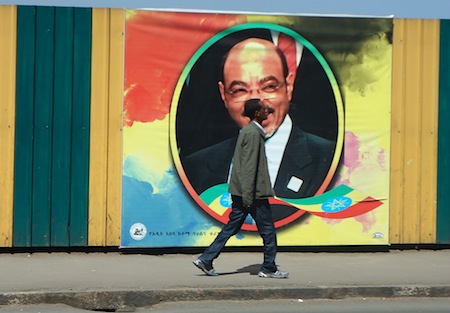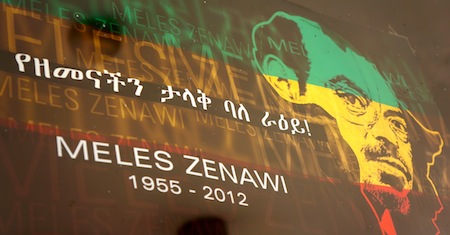Although Meles Zenawi died in mid-August, he’s still very much an active presence in Ethiopia — so much that he still eclipses his successor, prime minister Hailemariam Desalegn.![]()
Not to be flip, but I know a personality cult when I see one — and no matter where you go in Ethiopia, Meles follows.
He looks down from large signs, not just in the capital of Addis Ababa, but far beyond throughout the Amharic and Tigray hinterlands of northern Ethiopia as well. He’s also on dashboards of vehicles, and he graces storefronts, the stalls in labyrinthine markets and insurance companies, not to mention government offices and museums.. In downtown Addis, near the Hilton, there’s an entire wall featuring a dozen or so larger-than life panels picturing Meles.
You’d be forgiven if you thought Meles was actually still in charge, although there are more than enough memorial displays, too, to let you know Ethiopia’s still in a sort of mourning:
In the ten days I spent in northern and central Ethiopia, I found much in the country — 85 million people and growing fast — and its people to give me hope about the country’s future, but I also saw a lot of room for institutional improvement — in education and literacy, in transportation and infrastructure, in providing services to improve health and lessen poverty, and also in building more robust democratic institutions and better regional relations.
In the same way, I found that if you dig underneath the surface of it all, many Ethiopians have an equally conflicted view of Meles’s legacy. Continue reading Some thoughts on Meles Zenawi’s legacy in Ethiopia

